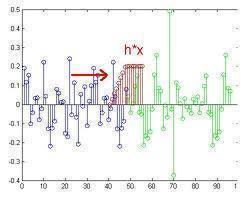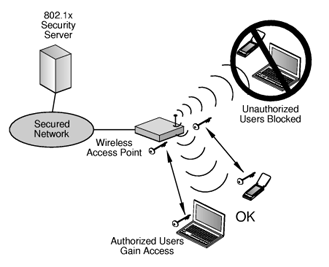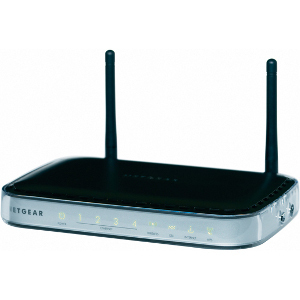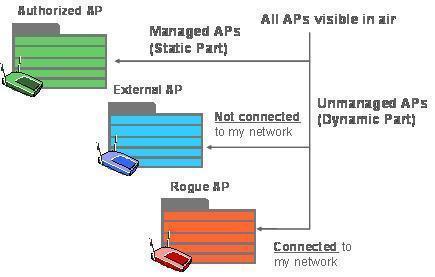Intersymbol interference is a signal distortion in telecommunication. One or more symbols can interfere with other symbols causing noise or a less reliable signal. The main causes of intersymbol interference are multipath propagation or non-linear frequency in channels. This has the effect of a blur or mixture of symbols, which can reduce signal clarity. If intersymbol interference occurs within a system, the receiver output becomes erroneous at the decision device. This is an unfavorable result that should be reduced to the most minimal amount possible. Error rates from intersymbol interference are minimized through the use of adaptive equalization techniques and error correcting codes.
Multipath Propagation
Multipath propagation causes intersymbol interference when a wireless signal being transmitted reaches a receiver through different paths. This commonly occurs when reflected signals bounce off of surfaces, when the wireless signal refracts through obstacles, and because of atmospheric conditions. These paths have different lengths before reaching the receiver, thus creating different versions that reach at different time intervals. The delay in symbol transmission will interfere with correct symbol detection. The amplitude and or phase of the signal can be distorted when the different paths are received for additional interference.
Bandlimited Channels
A bandlimited channel is cut off past certain frequency ranges. This results in a zero response when the signal is below or above the frequency range that the receiver allows. Whenever this signal type goes out of range, frequency components that are removed are then an incomplete signal. The channel with missing information, therefore, cannot use the attenuated frequency.
This occurs because the receiver’s filtration collects the pulse’s shape differently. The pulse is then altered in such a way that the shapes of the first symbol period as well as any subsequent symbol periods have interference. Messages with spread pulses arrive through the channel with interference.
Bandlimited channels are not limited to wireless devices. Wired devices can also receive intersymbol interference when the signal being sent through the channel is truncated. This occurs often when the channels’ application is to transfer multiple independent signals through the same cable or area. The available bandwidth then needs to be split and allocated to the different channels.
With wireless systems, a specified selection of the electromagnetic wave spectrum can be dedicated to specific types of transmissions/broadcasts. A government agency is usually the administration of such frequency allocation. The cable’s owner typically controls and allocates the wired systems.
A medium’s physical properties can also contribute to bandlimited signal. Wired systems may be capable of processing signals below or above cutoff ranges. Transmitted signals may not propagate at these frequencies, which lead to incomplete signals.
Communication systems that transmit data with pulse shaping that brackets the frequency within the channel ranges enhance bandlimited channels. This reduces intersymbol interference significantly and encourages compatible transmissions to be received at the wireless receiver or through a wired system. Adaptive equalizers are used when the channel response is unknown in advance to compensate frequency responses outside of the bandlimited ranges.
Results of Intersymbol Interference on Eye Diagrams
The oscilloscope representation of transmitted signals is known as an eye diagram. Pulse code modulation or data transmission systems can be used to apply sawtooth waves between an oscilloscope’s deflection plates at a symbol rate R(R=1/T) at horizontal deflection plates. The resulting binary waves are comparable to the shape of the human eye. The patterns that are created with this tool can illustrate the transmission’s performance within applicable constraints.
The width of the waves in eye diagrams represent the time between each sampling. The preferred time for sampling transmissions is when the eye is open widest on the diagram. The rate of eye closure intervals can determine the sensitivity of timing errors on the signal. The tallest opening of the eye diagram at any given sampling time illustrates the margin over noise. The noise margin is basically the limit of noise that causes errors at the receiver.
When intersymbol interference is applied to the transmissions, the resulting waves are distorted and delayed. The oscilloscope illustrates several pulse variations that have less definition, smaller noise margins, and sample windows. Transmissions with intersymbol interference have worse performance within the system.
Techniques to Counter Intersymbol Interference
Intersymbol interference can be countered in telecommunications and data storage.
Systems can be designed to shorten impulse responses that are short enough to reduce the possibility of signals crossing over to other symbols within the transmission. Energy that is intact is then restrained within each symbol and without additional data from other signals in the mix.
Creating transmissions with consecutive raised-cosine impulses can help prevent intersymbol interference. These types of signals can have zero intersymbol interference properties.
Guard periods can be put in place to separate symbols. This prevents symbols from being received out of order or cluttered, preventing intersymbol interference.
An equalizer at the receiver can apply an inverse filter. This removes the channel’s effects and increases the ability to receive signals outside of bandlimited frequencies.
The Viterbi algorithm can be applied to determine the probability of a sequence of observed events within transmissions. This is achievable by using a sequence detector at the receiver.




Follow Us!